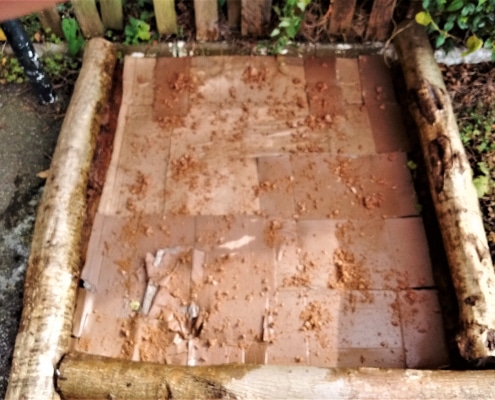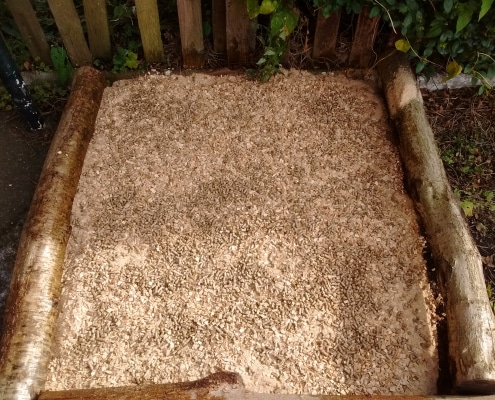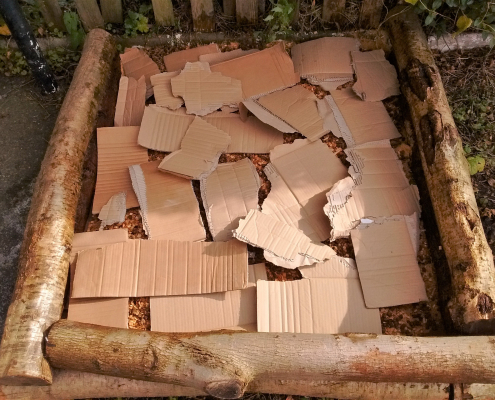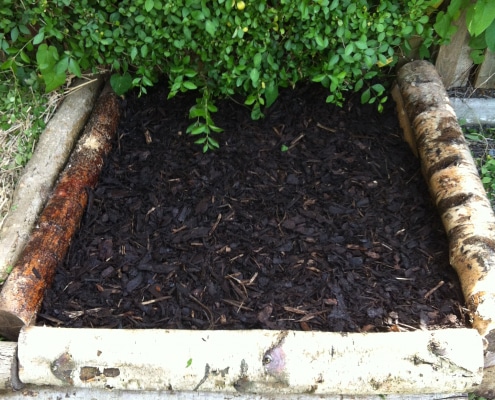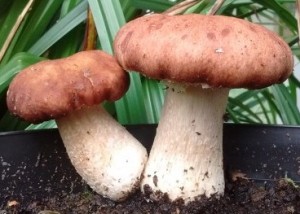 King Stropharia is commonly cultivated in raised, or dug-in beds, which are lined with cardboard and then layered with a mixture of sawdust spawn and wood-based materials. King Stropharia can also be grown in large planters and plant pots and also on whole bales of cereal straw.
King Stropharia is commonly cultivated in raised, or dug-in beds, which are lined with cardboard and then layered with a mixture of sawdust spawn and wood-based materials. King Stropharia can also be grown in large planters and plant pots and also on whole bales of cereal straw.
1kg of Sawdust Spawn is required per 1 metre square bed filled to a depth of around 15 cm, or is sufficient for 1 small bale of straw.
Suitable Raw Materials
Woodchip and Sawdust: source fresh hardwood woodchip/sawdust (the fresher the better) which is less than 3 months old. There can be some softwood mixed in but make sure it’s less than 50%. Tree Surgeons will drop off woodchip for free and local councils can often can supply it as well. A 15kg sack (50 litres) will cover 1 m square.
Cereal Straw: wheat, barley, and hemp straw are suitable. For bed cultivation straw must chopped into smaller lengths of 5 to 10 cm to reduce its volume down otherwise yields will be poor. It can be chopped down using a garden shredder or laid out and chopped using a lawn mower. Whole bales can also be used.
Animal Manure/Bedding: well rotted stable manure and poultry bedding can be used and is best mixed 50/50 with woodchip.
Garden Waste: grass clippings twigs and branches can be mixed in with woodchip and chopped straw but no more than 25% by volume.
Locating the Bed
Beds are located in shaded well draining areas and spawned after the frosts end in Spring and before the first frosts of Winter. They can be raised like vegetable beds, or dug in. They can also be located under mature deciduous trees in a doughnut shape and also under large leaved vegetables such as courgettes or kale for example.
Beds spawned in Spring have a very good chance of producing in Summer that year if the mycelium is well established, otherwise it will produce the first crop the following year.
Making the Bed
Beds are constructed by layering the material like a lasagne. Cardboard is used to line the bed which help suppress weeds, protect it from pests such as insects slugs and snails, and also competing soil-borne fungi. Each layer is around 5 cm deep which will prevent the material composting too quickly to a maximum depth of 20 cm.
Measure out the site and line with flattened out cardboard boxes. Water the cardboard until it is fully saturated. Break-up the sawdust spawn while it is still in the bag—this will disrupt the mycelial network making it less visible to the naked eye. A few lumps and clumps will be fine to distribute over the cardboard. Using about 1/4 of the spawn to create small spawn islands with the aim of encouraging the mycelium to branch-out and join-up to form a network.
Straw Bale Method
Soak the bale overnight in clean water and then drain. Site in a shaded sheltered area raised off the ground on a pallet or blocks. Break-up the sawdust spawn and push handful sized quantities of spawn towards the centre of bale at various points round the sides and top.
Straw Pellet Method
Measure out the site and line with cardboard as above in step 1. 15kg of pellets is suitable for a 1m square bed. Fill the site with dry pellets. Break up the spawn and distribute evenly over the surface and then mix through the pellets ensuring even distribution. Apply 25.5 litres of water per bed using a watering can which will bring the moisture up slowly and evenly.
The instructions that we supply with King Stropharia Sawdust Spawn include much more info about how and when the mushrooms grow, maintaining the bed, creating mother beds, etc.. They can be downloaded from the product page here.

